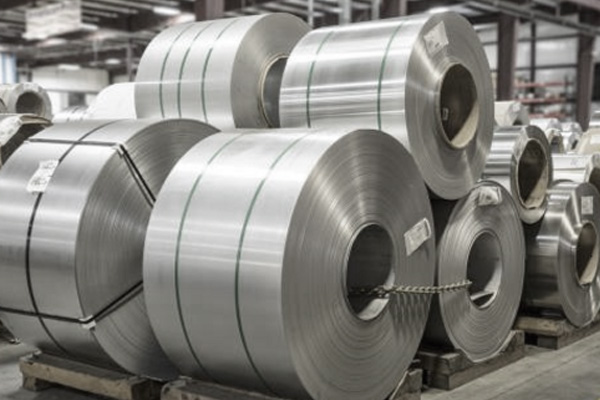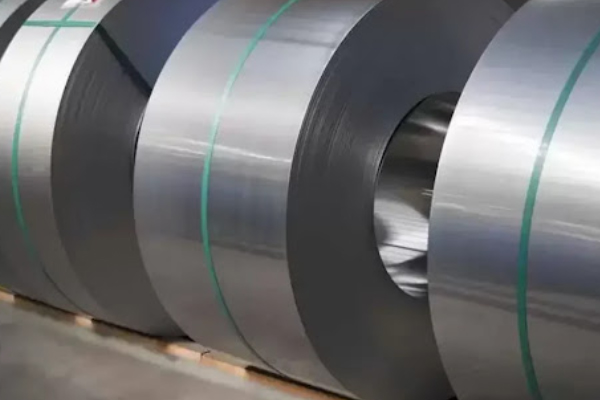Electric motors change electrical energy into mechanical motion, driving a wide range of devices, from home appliances to large industrial equipment. At the heart of this process is the laminated core, which helps minimize energy loss and improve efficiency. The material used for laminations affects performance, durability, and cost.
The main materials—silicon steel, cobalt alloys, nickel alloys, and iron alloys—each have pros and cons depending on the motor’s needs. This article will compare these materials based on their magnetic properties, cost, efficiency, and suitability for different motor types.
Silicon Steel
![]()
When it comes to electric motor laminations, silicon steel, sometimes referred to as electrical steel, is the most used material. This alloy is created by adding silicon to iron, which enhances its electrical properties.
Silicon steel is used in a broad range of motors, from small household appliances to large industrial machinery, owing to its affordability, decent magnetic properties, and widespread availability.
Advantages of Silicon Steel:
- High Magnetic Permeability: Silicon steel allows the efficient flow of magnetic flux, which is essential for motor performance.
- Low Eddy Current Loss: The addition of silicon reduces eddy current losses, which makes it more energy-efficient.
- Cost-Effective: Silicon steel is cheaper compared to cobalt alloys and nickel alloys, making it a go-to choice for mass-produced motors.
- Widespread Availability: Silicon steel is readily available, making it easier for manufacturers to source the material.
Disadvantages of Silicon Steel:
- Limited Efficiency at High Frequencies: Silicon steel tends to lose efficiency when used in high-speed motors or high-frequency applications.
- Magnetic Saturation: It has a lower magnetic saturation point compared to cobalt alloys, which limits the power output of high-performance motors.
Silicon steel remains the go-to choice for many motor applications because of its balance between performance and cost, especially for medium to low-speed motors.
Cobalt Alloys

Cobalt alloys are used in more demanding motor applications where high efficiency, power density, and speed are required. Frequently, cobalt, iron, and other metals like nickel or chromium make up these alloys.
They provide superior magnetic properties and are typically used in high-performance motors that require greater magnetic saturation and efficiency at high speeds.
Advantages of Cobalt Alloys:
- Superior Magnetic Saturation: Cobalt alloys offer higher magnetic saturation, meaning they can carry more magnetic flux, which is essential for high-power, high-efficiency motors.
- Better High-Speed Performance: These alloys maintain their efficiency at higher frequencies, making them ideal for motors that operate at high speeds.
- Thermal Stability: Cobalt alloys have a high resistance to thermal degradation, maintaining performance even under extreme temperature conditions.
Disadvantages of Cobalt Alloys:
- High Cost: Cobalt alloys are significantly more expensive than silicon steel, making them less suitable for low-cost or mass-market motors.
- Brittleness: While cobalt alloys provide excellent magnetic properties, they are more brittle than silicon steel, which can make them challenging to work with in motor manufacturing.
Cobalt alloys are best suited for high-end motors, such as those used in aerospace, military, and industrial applications, where performance is prioritized over cost.
Nickel Alloys

Nickel alloys are a middle ground between silicon steel and cobalt alloys. Nickel is added to iron to create alloys that have improved strength, magnetic properties, and resistance to corrosion.
These alloys are increasingly being used in motors that require a balance of performance, durability, and strength.
Advantages of Nickel Alloys:
- Enhanced Mechanical Strength: Nickel alloys are stronger than silicon steel, providing better structural integrity under load and in harsh conditions.
- Corrosion Resistance: These alloys offer excellent resistance to oxidation and corrosion, making them ideal for motors exposed to chemical or environmental stress.
- Versatility: Nickel alloys can be tailored for various applications, offering a balance between magnetic performance and mechanical durability.
Disadvantages of Nickel Alloys:
- Lower Magnetic Saturation: While nickel alloys offer strong mechanical properties, their magnetic saturation is lower than that of cobalt alloys, limiting their use in high-power motors.
- Higher Cost: Nickel alloys are more expensive than silicon steel, though not as costly as cobalt alloys.
Nickel alloys are a good choice for applications where durability, corrosion resistance, and mechanical strength are critical, such as motors used in marine, automotive, and heavy-duty industrial settings.
Iron Alloys

Iron alloys, especially those containing carbon, are some of the most traditional materials used in motor laminations. These alloys are known for their excellent magnetic properties, although they have limitations when it comes to energy efficiency and high-speed performance.
Advantages of Iron Alloys:
- Good Magnetic Properties: Iron alloys can carry magnetic flux effectively, making them suitable for low-cost applications like transformers and low-performance motors.
- Availability and Cost: Iron is abundant and inexpensive, making iron alloys a cost-effective option for budget-conscious manufacturers.
- Simple Processing: Iron alloys are easier to process and machine compared to more complex alloys like cobalt or nickel.
Disadvantages of Iron Alloys:
- Higher Eddy Current Losses: Iron alloys tend to have higher hysteresis and eddy current losses compared to silicon steel, which results in lower motor efficiency.
- Limited Performance at High Speeds: Iron alloys are not well-suited for high-speed applications, as they perform poorly at higher frequencies.
Iron alloys are most commonly used in low-cost applications or where high performance is not essential, such as in small motors or transformers.
Material Comparison Table:
| Property | Silicon Steel | Cobalt Alloys | Nickel Alloys | Iron Alloys |
| Magnetic Permeability | High | Very High | Moderate | Good |
| Magnetic Saturation | Moderate | Very High | Moderate | Low |
| Energy Efficiency | High | Very High | High | Low |
| Cost | Low | High | Moderate | Very Low |
| Mechanical Strength | Moderate | High | Very High | Moderate |
| Corrosion Resistance | Moderate | Moderate | High | Low |
| High-Speed Performance | Moderate | Very High | Moderate | Poor |
| Applications | Common Motors | High-Performance | Durable Motors | Low-Cost Motors |
Conclusion: Which Material is Best for Electric Motor Laminations?
When it comes to selecting the best material for electric motor laminations, there is no one-size-fits-all answer. The choice of material depends on the specific performance requirements, operational conditions, and cost considerations of the motor in question.
- Silicon Steel is the best choice for most general-purpose motors, offering a good balance between cost and performance.
- Cobalt alloys are perfect for high-speed, high-power, or high-performance applications where thermal stability and magnetic efficiency are essential.
- Nickel Alloys provide a balance of mechanical strength, durability, and performance, making them suitable for motors exposed to harsh environments.
- Iron Alloys are best suited for low-cost, low-performance applications where energy efficiency is not a top priority.
Ultimately, manufacturers must carefully evaluate their specific needs and application requirements to select the right material that offers the best combination of performance, durability, and cost-effectiveness.


